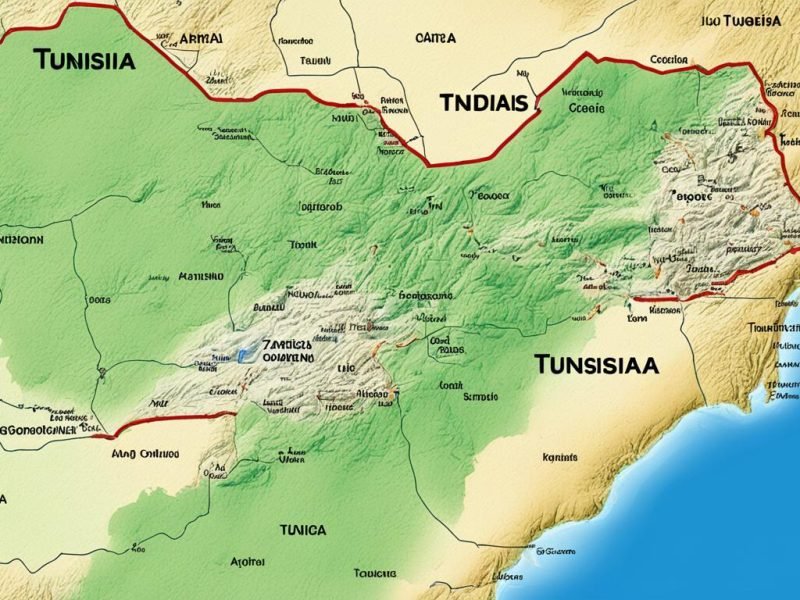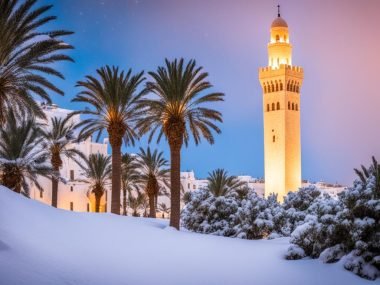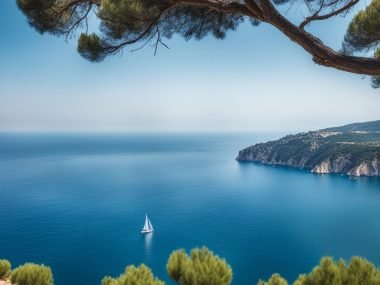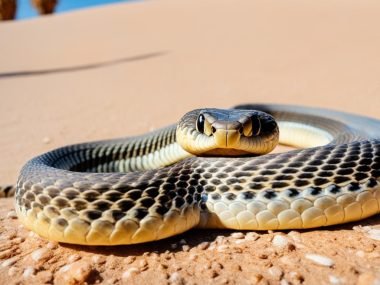Did you know Tunisia is super close to Italy, only 130 kilometres away from Sicily? It’s right where Africa and Europe meet. This gives Tunisia a rich mix of culture and history. Officially, it’s called the Republic of Tunisia and it’s a big part of North Africa’s Maghreb region. Its north and east coasts are along the beautiful Mediterranean Sea. This makes Tunisia very important in that area.
Tunisia has Algeria on its west and Libya on its southeast. Being close to European countries like Italy and Malta has shaped its history and culture a lot. Tunisia is like a blend of different traditions. If you look at a map or study its place on the globe, it’s clear. Tunisia has a special spot in the north of Africa.
Key Takeaways
- Tunisia is the northernmost country in Africa.
- It is part of the Maghreb region in North Africa.
- Strategically located with the Mediterranean Sea to its north and east.
- Borders Algeria and Libya.
- Close proximity to Italy and Malta enriches its cultural and historical significance.
Tunisia’s Geographical Location
Tunisia is in a key spot on the map, at 34°N 9°E. It covers 163,610 square kilometres. This makes Tunisia an important link between Africa and the Mediterranean.
Tunisia sits where the Eastern and Western Mediterranean meet. It has always been central for both culture and conquests. Its coast is easy to reach. Tunis, the capital, is in the northeast, adding to its strategic value.
The Geography of Tunisia shapes its history and culture. Being at the top of Africa makes it key to the area’s politics.
| Aspect | Details |
|---|---|
| Coordinates | 34°N 9°E |
| Land Area | 163,610 sq km |
| Capital | Tunis |
| Coastline | Mediterranean Sea |
Learning about Tunisia’s geography shows why it’s vital. Its location highlights its role in history and today’s world.
Tunisia’s Position in Northern Africa
Tunisia is in Northern Africa at 34°N 9°E. Its location is at the top of Africa. This makes it very important in the area.
Geographical Coordinates
Tunisia’s spot at 34°N 9°E marks it as key in Northern Africa. It shows how close Tunisia is to the sea and Europe.
Bordering Countries
Tunisia has neighbours like Algeria and Libya. Algeria is on the west and southwest. Libya is on the southeast. This makes Tunisia central in African politics.
Mediterranean Sea Influence
The Mediterranean Sea touches Tunisia, linking it with Italy. This connection affects Tunisia’s weather and money. It also helps Tunisia share with Europe and Africa.
African Geography and Tunisia
When looking at Tunisia African geography, we see a country with many different types of land. It has the eastern part of the Atlas Mountains which bring a mix of heights and weather. Along with the northern edge of the Sahara desert, Tunisia shows off a wide range of environments. Each plays a big part in the country’s geographical importance.
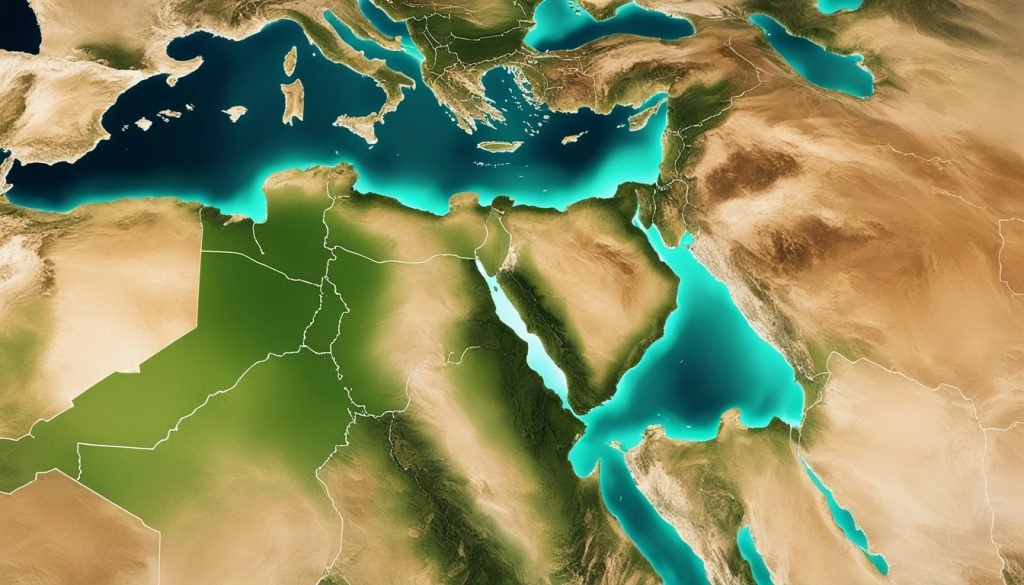
The long Mediterranean coastline of Tunisia is very important. It helps with fishing, tourism, and the movement of goods and cultures through history. The north and middle of Tunisia have fertile land that is good for farming. This makes Tunisia a key agricultural player in the area.
The land in Tunisia is made up of farms, tall mountains, and big desert areas. This mix affects everything in Tunisia, from its culture and history to how people live their daily lives. The way the land and people work together shows how important Tunisia African geography is.
Historical and Cultural Significance of Tunisia
Tunisia is very important in history. It saw many great civilisations rise and fall. The city of Carthage was a big rival to the Roman Republic.
Ancient Carthage
Carthage Tunisia was known for its strong army and wide trade links. Today, old ruins show how major Carthage was in history. These sites show Carthage’s advanced culture, highlighting Tunisia’s role in ancient times.
Arab Influence
In the 7th century, Arab Muslims came to Tunisia. They brought Islam, changing Tunisia’s culture and religion a lot. The Arab ways affected language, buildings, laws, and everyday life, making Arab heritage a big part of Tunisia.
Colonial and Modern History
In the 19th century, Tunisia was under French control. After winning independence in 1956, Tunisia started to rule itself. It mixed its history with new ideas. Now, Tunisia is known for blending its many historical influences well.
Understanding Tunisia’s history helps us see its rich cultural mix. The mix of old Carthage, Arab influences, and colonial past makes Tunisia special.
Unique Features of Tunisia’s Landscape
Tunisia’s landscape is stunning with its mix of mountains, deserts, and coastlines. It offers various experiences to people living there and visitors. These features make Tunisia special.
Atlas Mountains
The Atlas Mountains Tunisia are key to the country’s scenery. These mountains stretch across many African countries, ending in Tunisia. They offer beautiful views and affect Tunisia’s weather and Tunisia geography.
Sahara Desert
The Sahara Desert spreads into Tunisia’s south. It takes up a big part of Tunisia’s landscape. The desert’s size changes the local weather and life here. It is a wonderful place that many adventurers and tourists visit. They come to see its big dunes and special plants and animals.
Coastline and Beaches
Tunisia has a long coastline along the Mediterranean Sea. The Tunisia coastline is beautiful and helps the economy through tourism. The beaches are perfect for people looking for sunshine and sea. There are luxury resorts and historic sites along the coast. These spots are loved by visitors from all over the world.
Is Tunisia In Africa?
Yes, Tunisia is in Africa. It is the northernmost country in Africa. It links Africa and Europe together. The Mediterranean Sea is to its north and east.
Tunisia is very close to Europe. This closeness has brought cultural and economic swaps. So, the answer to Is Tunisia In Africa? is yes. It plays a big part in joining Africa and Europe.
| Attribute | Details |
|---|---|
| Continent | Africa |
| Geographic Identity | Northernmost African country |
| Strategic Position | Between Africa and Europe |
| Bordered by | Mediterranean Sea (North and East) |
| Proximity to Europe | Near Italy and Malta |
Looking at Tunisia’s location shows it’s part of Africa. Its spot at the top of Africa, by the Mediterranean, helps link to Europe.
Political and Economic Context
Tunisia’s political and economic scene is both complex and lively. It mirrors its rich past and key location. We will explore the main elements that shape Tunisia’s government and economic growth.
Government Structure
Tunisia is a semi-presidential republic. This means power is shared between the president and the prime minister. They both manage the country’s executive branch. The president is chosen by the people. The prime minister is picked by the president but needs parliament’s OK. This ensures strong governance and policymaking.
Economic Integration
On the economy side, Tunisia has made big steps forward. It has introduced reforms to grow its economy. The focus is on cutting joblessness, diversifying the economy, and making life better for its people. Tunisia has a moderate income inequality level. Plus, its people are steadily improving by global standards.
“Economic development Tunisia has witnessed a gradual and steady improvement due to strategic reforms and international cooperation.”
Foreign Relations
Tunisia has solid relationships worldwide and is part of many global groups. Being near Europe helps Tunisia have strong ties with countries like France and Italy. These connections support trade, tourism, and culture. Such international ties are vital for Tunisia’s ongoing growth.
| Aspect | Details |
|---|---|
| Government Structure | Unitary semi-presidential republic |
| Key Figures | President and Prime Minister |
| Economic Indicators | Medium Gini coefficient, increasing HDI |
| Key Partnerships | France, Italy |
Climatic Conditions in Tunisia
Tunisia’s weather changes from north to south. The north has a Mediterranean climate. It has mild, rainy winters. And hot, dry summers. This weather is good for farming and tourism by the sea.
As you go south, it gets drier and hotter. Here, the Sahara Desert affects the weather. So, the south is hotter and drier. Rain falls sometimes, but it’s heavy when it does.
The Tunisia climate also has sirocco winds. These winds are hot and dry. They come from the Sahara Desert. They make it hotter and less humid in the middle and south of Tunisia.
So, knowing about Tunisia’s Mediterranean climate and the desert south is important. It helps in farming, tourism, and managing water. We need different plans for each climate in Tunisia.
| Region | Climate Type | Characteristics |
|---|---|---|
| North | Mediterranean | Mild, rainy winters; hot, dry summers |
| South | Semiarid/Desert | Hot and dry, with occasional heavy rainfall |
| Central | Sirocco Winds | Hot, dry winds causing temperature spikes |
Importance of Tunisia in the African Continent
Tunisia is a big part of Africa. It is known for its history and modern economy. It offers a lot to the world.
Cultural Contributions
Tunisia has a rich history. It shows in its culture. The ancient city of Carthage shows how historic it is.
The country mixes Arab, Berber, and European cultures. This mix makes Tunisia’s culture vivid. It adds to Africa’s cultural diversity.
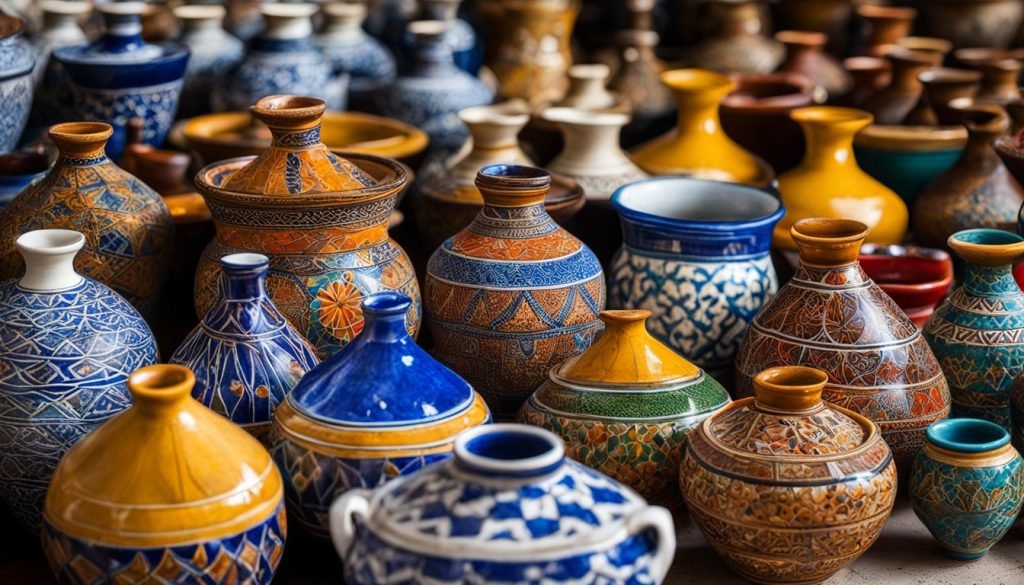
Economic Contributions
Tunisia is key to Africa’s economy. Its farms are very important. The country also does well in making things and tourism.
Lately, Tunisia has been updating its economy. These changes help Tunisia grow. It also makes Tunisia more important in Africa.
Political Influence
Tunisia leads in North African politics. It became famous during the Arab Spring in 2011. This started change in many countries.
Tunisia shows how democracy can work in North Africa. Its progress inspires others in the area.
| Aspect | Contribution |
|---|---|
| Cultural | Rich historical tapestry, diverse influence from various civilisations |
| Economic | Agricultural wealth, progressive economic policies |
| Political | Influence in democratic movements, role in the Arab Spring |
Conclusion
Tunisia is very important in Africa for many reasons. Its location is at Africa’s top end, near Europe. This spot helps it connect Africa and Europe well.
But Tunisia is not just about where it is. Its history is filled with stories from the city of Carthage and more. These stories make its culture very rich and special.
The country is also doing well in money matters, being smart in business. It also sets a good example for freedom and change in nearby places. Tunisia shows that it’s great not just for where it is, but for what it does.

